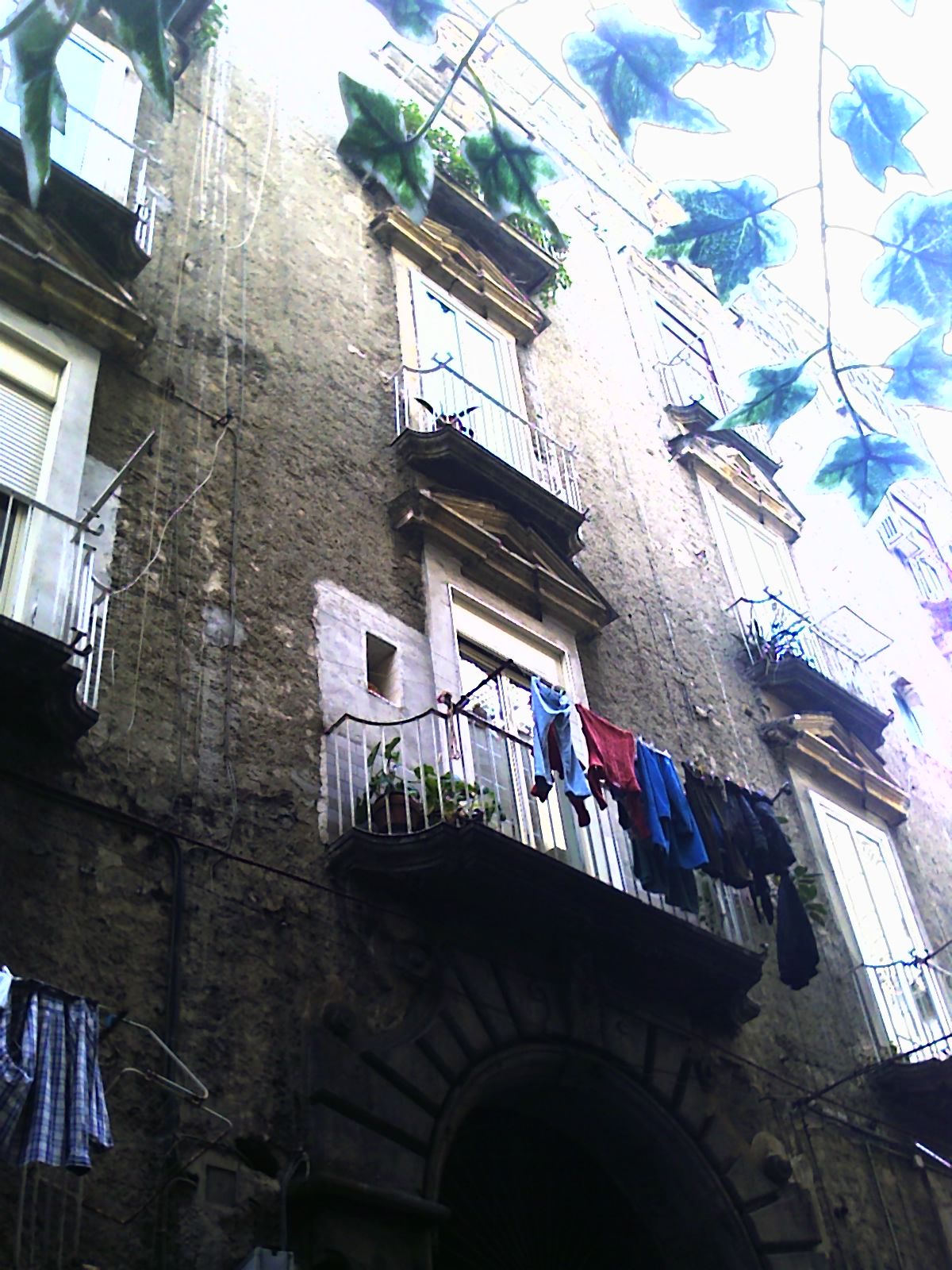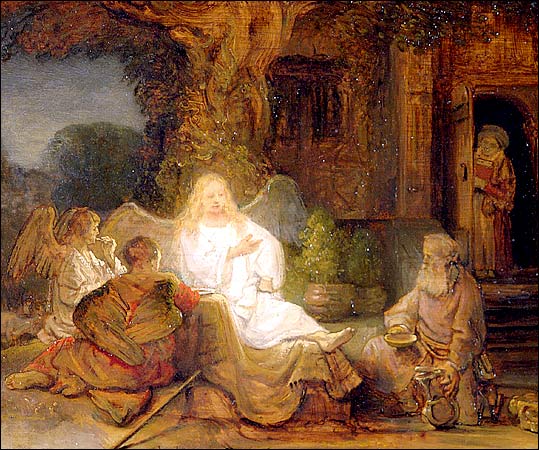|
San Raffaele, Naples
San Raffaele (also known as San Raffaele a Materdei or properly, Santi Raffaele e Margherita da Cortona) is a church on Via Amato di Montecassino, in the quartiere of Materdei in Naples, Italy. The church was founded in 1759 built on designs of Giuseppe Astarita Giuseppe Astarita (Naples, 1707 – Naples, 1775) was an Italian architect and engineer of the late- Baroque or Rococo period. He was a pupil of Domenico Antonio Vaccaro and collaborated with Ferdinando Sanfelice; his style is influenced by ..., adjacent to a hospice for women called a Ritiro delle Pentite, or hospice for prostitutes. The interior has a Greek cross layout. The interior has a highly decorated polychrome altar surmounted by a ''baldacchino'' of gilded wood with angels and a crown. The frescoes were completed by Angelo Mozzillo. San Raffaele ( St Raphael), the patron of fishermen, and often represented in paintings with fish. The saint of this church was often revered by infertile couples. Bibliog ... [...More Info...] [...Related Items...] OR: [Wikipedia] [Google] [Baidu] |
Naples
Naples (; it, Napoli ; nap, Napule ), from grc, Νεάπολις, Neápolis, lit=new city. is the regional capital of Campania and the third-largest city of Italy, after Rome and Milan, with a population of 909,048 within the city's administrative limits as of 2022. Metropolitan City of Naples, Its province-level municipality is the third-most populous Metropolitan cities of Italy, metropolitan city in Italy with a population of 3,115,320 residents, and Naples metropolitan area, its metropolitan area stretches beyond the boundaries of the city wall for approximately 20 miles. Founded by Greeks in the 1st millennium BC, first millennium BC, Naples is one of the oldest continuously inhabited urban areas in the world. In the eighth century BC, a colony known as Parthenope ( grc, Παρθενόπη) was established on the Pizzofalcone hill. In the sixth century BC, it was refounded as Neápolis. The city was an important part of Magna Graecia, played a major role in the merging ... [...More Info...] [...Related Items...] OR: [Wikipedia] [Google] [Baidu] |
Province Of Naples
The Province of Naples ( it, Provincia di Napoli; nap, Pruvincia 'e Nàpule) was a province in the Campania region of southern Italy. In 2014/2015, the reform of local authorities (Law 142/1990 and Law 56/2014), replaced the Province of Naples with the Metropolitan City of Naples. Demographics The province of Naples is the most densely populated in Italy. At the 2013 census were all located in the province, as were 10 of the top 15. It has an area of 1,171.13 km², and a total population of about 3.05 million. Largest communities in the Napoli metropolitan area: Tourism The area is particularly fruitful for tourism, both national and international. Pompeii, the excavated Roman city which was destroyed by Mount Vesuvius in 79 AD is among the most popular destinations in all of Italy. Three islands in the Gulf of Naples are also prominent destinations; Ischia, Procida, part of the Phlegrean Islands, and Capri. Together they are also known as the Campanian Archipe ... [...More Info...] [...Related Items...] OR: [Wikipedia] [Google] [Baidu] |
Campania
(man), it, Campana (woman) , population_note = , population_blank1_title = , population_blank1 = , demographics_type1 = , demographics1_footnotes = , demographics1_title1 = , demographics1_info1 = , demographics1_title2 = , demographics1_info2 = , demographics1_title3 = , demographics1_info3 = , timezone1 = CET , utc_offset1 = +1 , timezone1_DST = CEST , utc_offset1_DST = +2 , postal_code_type = , postal_code = , area_code_type = ISO 3166 code , area_code = IT-72 , blank_name_sec1 = GDP (nominal) , blank_info_sec1 = €108 billion (2018) , blank1_name_sec1 = GDP per capita , blank1_info_sec1 = €18,600 (2018) , blank2_name_sec1 = HDI (2018) , blank2_info_sec1 = 0.845 · 19th of 21 , blank_name_sec2 = NUTS Region , blank_info_sec2 = ITF , website ... [...More Info...] [...Related Items...] OR: [Wikipedia] [Google] [Baidu] |
Roman Catholic
Roman or Romans most often refers to: *Rome, the capital city of Italy *Ancient Rome, Roman civilization from 8th century BC to 5th century AD *Roman people, the people of ancient Rome *''Epistle to the Romans'', shortened to ''Romans'', a letter in the New Testament of the Christian Bible Roman or Romans may also refer to: Arts and entertainment Music *Romans (band), a Japanese pop group * ''Roman'' (album), by Sound Horizon, 2006 * ''Roman'' (EP), by Teen Top, 2011 *"Roman (My Dear Boy)", a 2004 single by Morning Musume Film and television *Film Roman, an American animation studio * ''Roman'' (film), a 2006 American suspense-horror film * ''Romans'' (2013 film), an Indian Malayalam comedy film * ''Romans'' (2017 film), a British drama film * ''The Romans'' (''Doctor Who''), a serial in British TV series People * Roman (given name), a given name, including a list of people and fictional characters * Roman (surname), including a list of people named Roman or Romans *Ῥωμα� ... [...More Info...] [...Related Items...] OR: [Wikipedia] [Google] [Baidu] |
Church (building)
A church, church building or church house is a building used for Christian worship services and other Christian religious activities. The earliest identified Christian church is a house church founded between 233 and 256. From the 11th through the 14th centuries, there was a wave of church construction in Western Europe. Sometimes, the word ''church'' is used by analogy for the buildings of other religions. ''Church'' is also used to describe the Christian religious community as a whole, or a body or an assembly of Christian believers around the world. In traditional Christian architecture, the plan view of a church often forms a Christian cross; the center aisle and seating representing the vertical beam with the bema and altar forming the horizontal. Towers or domes may inspire contemplation of the heavens. Modern churches have a variety of architectural styles and layouts. Some buildings designed for other purposes have been converted to churches, while many ori ... [...More Info...] [...Related Items...] OR: [Wikipedia] [Google] [Baidu] |
Baroque Architecture
Baroque architecture is a highly decorative and theatrical style which appeared in Italy in the early 17th century and gradually spread across Europe. It was originally introduced by the Catholic Church, particularly by the Jesuits, as a means to combat the Reformation and the Protestant church with a new architecture that inspired surprise and awe. It reached its peak in the High Baroque (1625–1675), when it was used in churches and palaces in Italy, Spain, Portugal, France, Bavaria and Austria. In the Late Baroque period (1675–1750), it reached as far as Russia and the Spanish and Portuguese colonies in Latin America. About 1730, an even more elaborately decorative variant called Rococo appeared and flourished in Central Europe. Baroque architects took the basic elements of Renaissance architecture, including domes and colonnades, and made them higher, grander, more decorated, and more dramatic. The interior effects were often achieved with the use of '' quadratura ... [...More Info...] [...Related Items...] OR: [Wikipedia] [Google] [Baidu] |
Roman Catholic Archdiocese Of Naples
The Roman Catholic Archdiocese of Naples ( it, Arcidiocesi di Napoli; la, Archidioecesis Neapolitana) is a Roman Catholic Archdiocese in southern Italy, the see being in Naples. A Christian community was founded there in the 1st century AD and the diocese of Naples was raised to the level of an Archdiocese in the 10th century."Archdiocese of Napoli " ''''. David M. Cheney. Retrieved February 29, 2016"Metropolitan Diocese of Napoli" ''GCatholic.org''. Gabriel Chow. Retrieved February 29, 2016 [...More Info...] [...Related Items...] OR: [Wikipedia] [Google] [Baidu] |
Giuseppe Astarita
Giuseppe Astarita (Naples, 1707 – Naples, 1775) was an Italian architect and engineer of the late- Baroque or Rococo period. He was a pupil of Domenico Antonio Vaccaro and collaborated with Ferdinando Sanfelice; his style is influenced by Guarino Guarini. He worked on the following buildings, sometimes in work of reconstruction. Works *Church of San Lorenzo delle Benedettine in Foggia *Church of San Pietro Martire *Church of Sant'Anna a Capuana *Church of San Raffaele *Palazzo di Sangro di Casacalenda, Naples *Church of Sant'Eustachio (Chiesa dell'Annunziata) and Church of Cappucini, Sessa Aurunca *Church of Santa Maria delle Graziedi di Melito, Province of Naples *Restoration of Torre Annunziata Torre Annunziata (; nap, Torr'Annunziata) is a city and commune in the Metropolitan City of Naples, region of Campania in Italy. It is located on the Gulf of Naples at the foot of Mount Vesuvius. History The city was destroyed in the Vesuvius ..., Naples *Restorations of ... [...More Info...] [...Related Items...] OR: [Wikipedia] [Google] [Baidu] |
Angelo Mozzillo
Angelo Mozzillo (24 October 1736 in Afragola – May 1810, in Nola) was an Italian painter of the late Baroque, active near Naples, Italy. He initially trained with a Giuseppe Bonito (Peppariello). After 1758, he left Afragola and moved to Nola. He then moved to study in the Academy of Fine Arts of Naples under Giuseppe Bonito and Paolo de Maio. In Nola, he painted several painting: an ''Immaculate Conception'' for the Cappella Nuova; a ''San Nicola di Bari'', and a ''St Francesco di Paola''. He also painted for the church of San Raffaele, Naples San Raffaele (also known as San Raffaele a Materdei or properly, Santi Raffaele e Margherita da Cortona) is a church on Via Amato di Montecassino, in the quartiere of Materdei in Naples, Italy. The church was founded in 1759 built on designs of .... , en ... [...More Info...] [...Related Items...] OR: [Wikipedia] [Google] [Baidu] |
Raphael (archangel)
Raphael (, "God has healed"), ''Rəfāʾēl'', Tiberian: ''Răp̄āʾēl''; lit. 'God has healed'; grc, Ραφαήλ, ''Raphaḗl''; cop, ⲣⲁⲫⲁⲏⲗ, ''Rafaêl''; ar, رافائيل, ''Rāfā’īl'', or , ''Isrāfīl''; am, ሩፋኤል, ''Rufaʾel''. is an archangel first mentioned in the Book of Tobit and in 1 Enoch, both estimated to date from between the 3rd and 2nd century BCE. In later Jewish tradition, he became identified as one of the three heavenly visitors entertained by Abraham at the Oak of Mamre. He is not named in either the New Testament or the Quran, but later Christian tradition identified him with healing and as the angel who stirred waters in the Pool of Bethesda in John 5:2–4, and in Islam, where his name is Israfil, he is understood to be the unnamed angel of Quran 6:73, standing eternally with a trumpet to his lips, ready to announce the Day of Judgment. In Gnostic tradition, Raphael is represented on the Ophite Diagram. Origins in ... [...More Info...] [...Related Items...] OR: [Wikipedia] [Google] [Baidu] |





